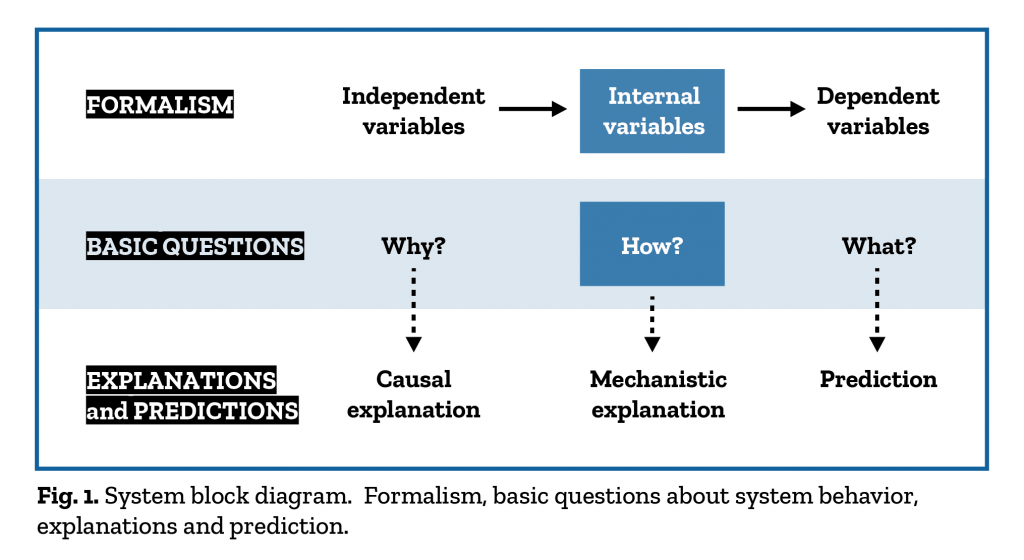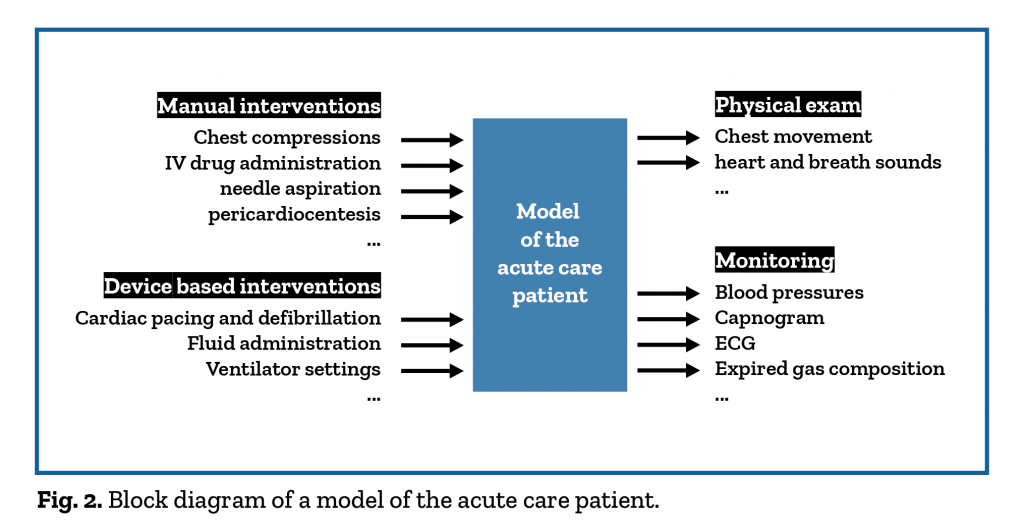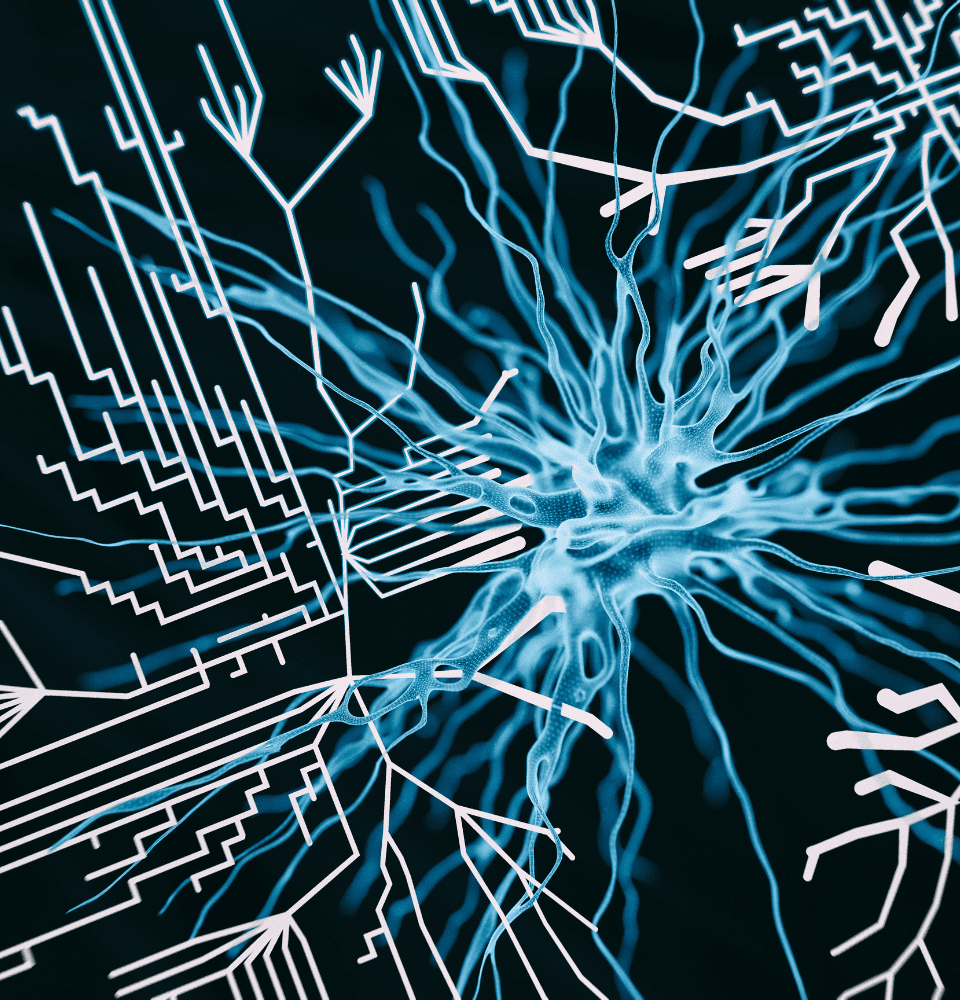System theory concepts explained in simple terms to better understand how simulators work
Simple causal chains of events do not suffice to grasp complex phenomena such as evolution of the climate, health and disease in the human body, or spread of infectious diseases. System theory offers an alternative approach to formulating and answering questions about such phenomena. The purpose of this short article is to introduce its basic concepts to the SIMZINE audience.
A system is a structured ensemble of interacting parts. An independent variable is a time varying quantity in the environment of the system that influences system behavior. A dependent variable is any time varying system quantity of interest that depends on the independent variables, if it influences the environment or not. The amount of fluid administered to a patient is an example of an independent variable. The resulting evolving blood pressure is an example of a dependent variable. Using these quantities we can ask basic questions about the behavior of the system, and provide relevant explanations or predictions.

Related fundamental characteristics of many systems are their hierarchical organization (systems and subsystems can be distinguished) and modularity (parts or subsystems can be joined or replaced by equivalent parts). Western medicine looks at the human body in terms of organ systems, organs, tissues, cells, and molecules. Fixing or replacing damaged or malfunctioning “parts” is daily practice to extend life expectancy. Many systems include feedback control mechanisms. Negative feedback has a stabilizing role and helps maintain critical variables in narrow ranges under changing environmental conditions. For example, decreasing blood oxygen content during exercise will result in increasing ventilation, increasing the oxygen levels again. Positive feedback is not only important in communication and education, it also occurs in nature. For example, during labor the fetal head pushes on the cervix, resulting in oxytocin release, which results in deeper and faster contractions, increasing pressure on the cervix, until delivery ensues. Control engineering and system design are other areas that rely on system theory. Modeling is the “executive branch” of system theory.
A model is a formal representation of the relationships between system variables of interest. Developing a model starts by formulating requirements in the form of a more explicit version of Figure. 1, for example for a model of the acute care patient.

Additional model requirements can specify which mechanisms should be reflected in the model, which mechanisms can be excluded, and what the best level of representation is. For example, should the baroreflex or kidney function be represented or not? Should cells and tissues be modeled, or are organ level models accurate enough? More complex models are often more accurate, but have more parameters (constants in model equations that determine the relationships between variables) that need to be estimated, and their software implementation may run too slowly for the envisioned application. Model development then involves formulation of a conceptual model. Examples of conceptual models are detailed block diagrams of connected subsystems, or component or circuit diagrams. Designing and building a physical model is an option, but more often we derive a mathematical model, and implement it in software, further see van Meurs (2011). Simpler models can be mathematically analyzed, but for the complex models of physiological systems we often use simulation.
A simulator is a device that assumes the appearance and behavior of a system. For simulators used in research, where the accent lies on system behavior, independent variables can be set via the keyboard and dependent variables can be plotted. For medical training simulators, both the behavior and the appearance of the simulator are important. Simulator behavior can be controlled by an operator, or automatically by scenario scripts or models, also see van Meurs, et al. (1997). Pre-defined scripts behave predictably, but cannot be expected to reflect all potential situations resulting from manipulation of multiple interventions by the trainee(s). In a subsequent article we will come back to the design of acute care training simulators.
Systems abound in healthcare. Modeling and simulation apply to the study, training, and design of all of these systems. The scope of the peer-reviewed academic journal, Advances in Simulation, includes empirical and conceptual research on system theory and modeling and simulation of human physiology. Submissions on any of these topics are welcome.
References
Van Meurs WL, Good ML, Lampotang S. Functional anatomy of full-scale patient simulators. J Clin Monit 1997 Sep;13(5):317-24.
Van Meurs W: Modeling and simulation in biomedical engineering: Application to cardiorespiratory physiology, New York, McGraw-Hill, 2011.
READ ALSO
































2 comments on “System theory for simulationists”
That’s awesome how such complex concepts are easy to understand with mastery teachers….
Thanks Willem
See you soon in Auch, France ?
Merci Fouad. Quand tu veux à Auch 🙂